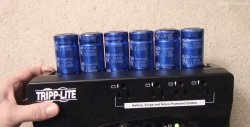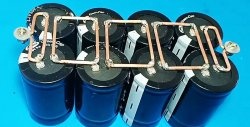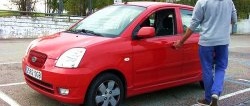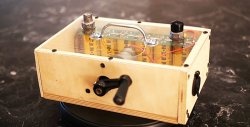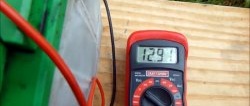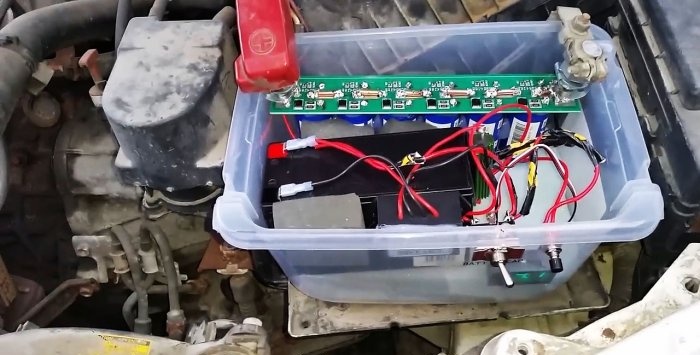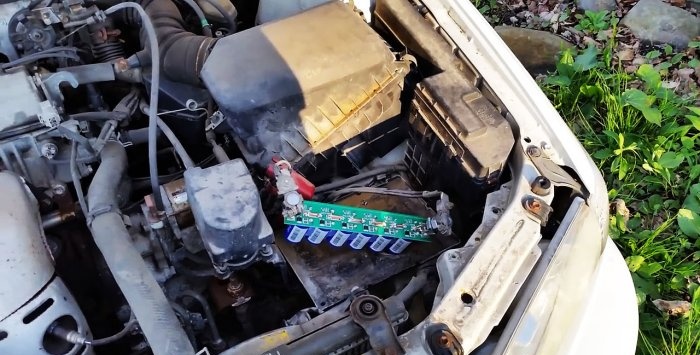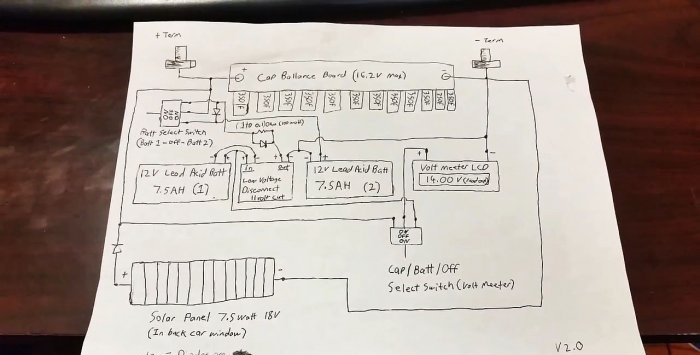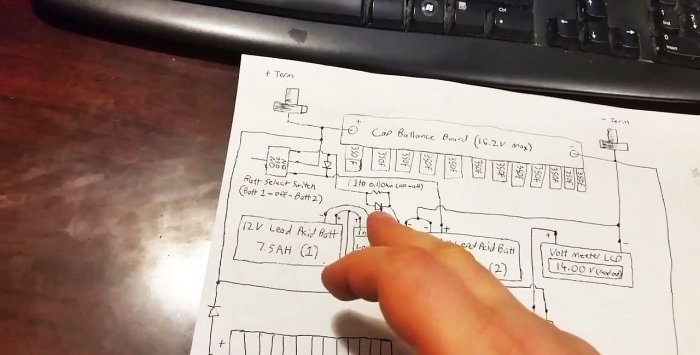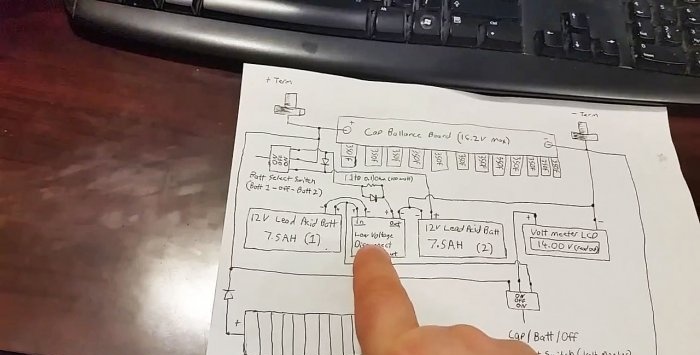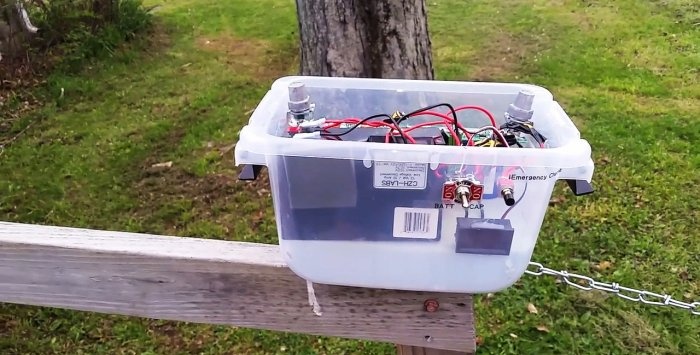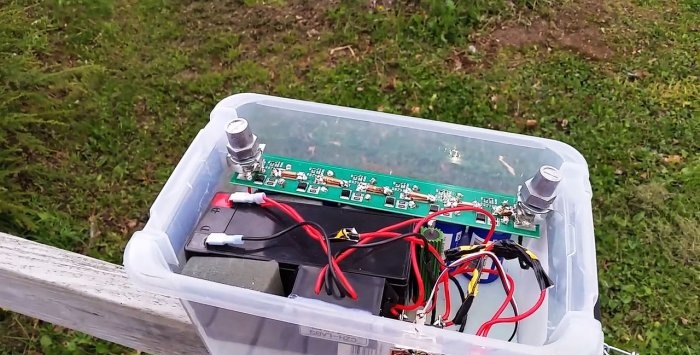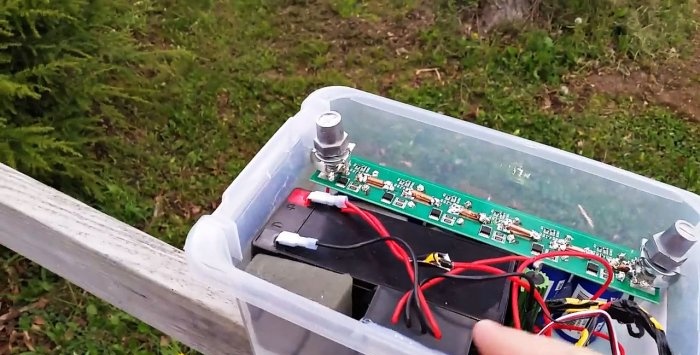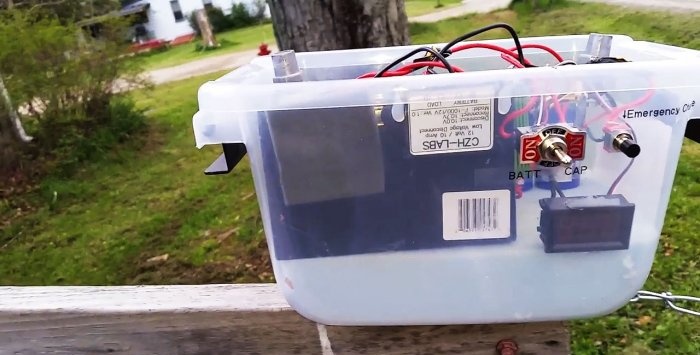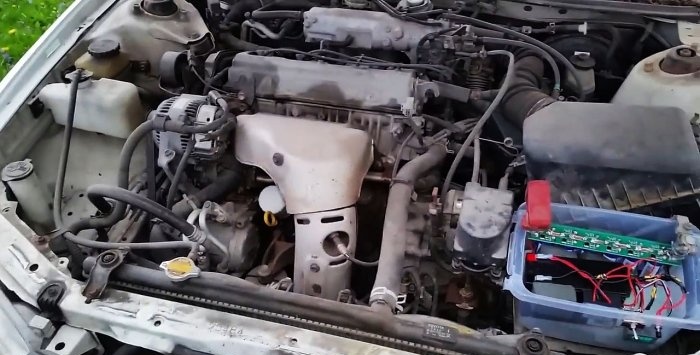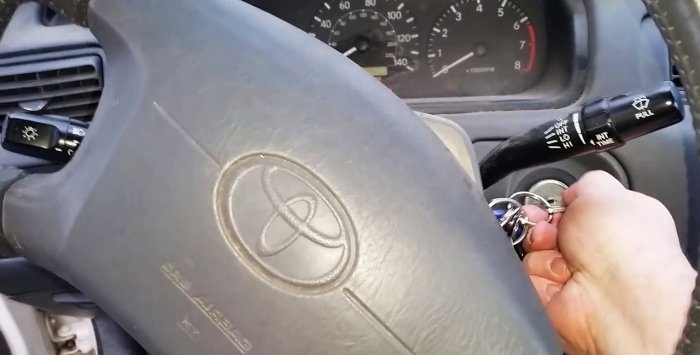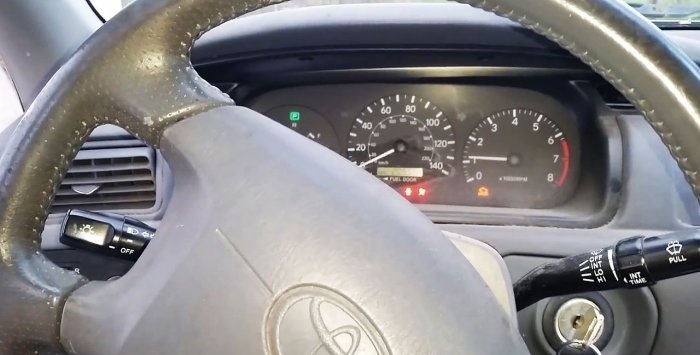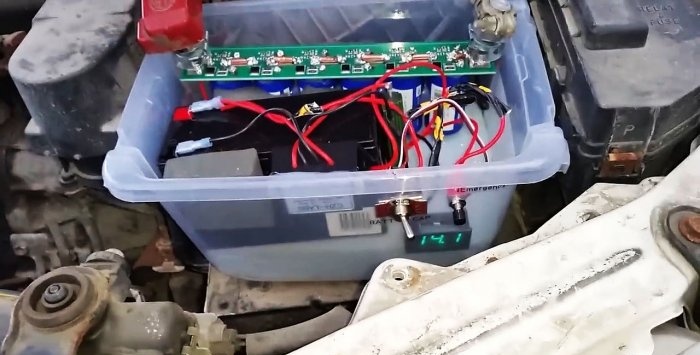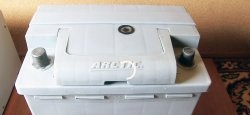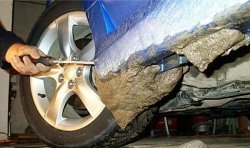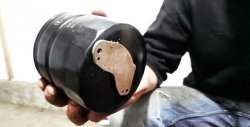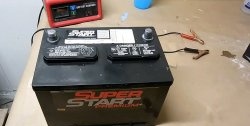Supercapacitors instead of a battery in a car
Supercapacitor or ionistor - this is something between a battery and a regular capacitor. It has many advantages that a rechargeable battery does not have. Therefore, I will introduce you to a fully working prototype of a battery for a car using ionistors. With it, you can not just start the engine a couple of times, but fully operate the car for an unlimited time.
Will need
This is enough for the first prototype.
First test with engine start
I bought 6 supercapacitors and a balance protection board, they are sold individually for each ionistor, and sometimes there is a whole ruler for six pieces.
Put it all together.
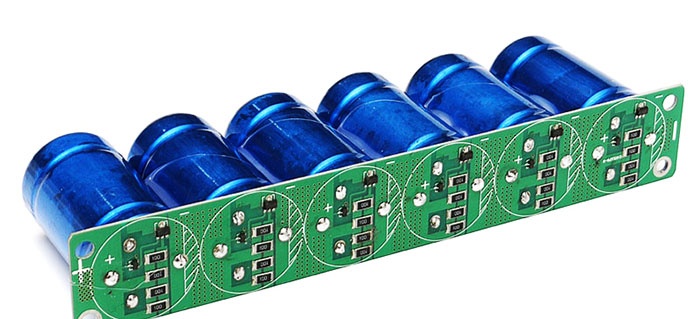
The protection board prevents overcharging of supercapacitors with voltages above 2.7V, so it is almost mandatory to use it if the elements are connected in series.
Next, I soldered the terminals and installed this battery on the car. But first it must be charged with a small current of 5-7 A to operating voltage. This took 10-15 minutes.
After connecting, the car started up without unnecessary difficulties, the engine ran stably, and the voltage in the on-board network was kept at the proper level.
During this experiment, the following advantages and minutes were revealed: a battery made of ionistors quickly discharged when the ignition was turned off, namely, after about 5-6 hours the voltage dropped to 10 V. This was a minus, but the plus was that even with this voltage the car still started, since for ionistor Any voltage is working, unlike a battery.
As a result, it was no longer possible to start the engine after one day. And I decided to correct this shortcoming in the next design.
Scheme
Here is a diagram of the second battery prototype.
Let me make a reservation right away: it does not have a solar panel or a second battery. It also uses a line of supercapacitors with a balanced board. Also added is a battery charge controller, a pair of switches, a voltmeter and a small 7.5Ah battery itself.
The operation of the device is as follows: before starting the car, open the hood and press the top switch according to the diagram. Through a powerful 50 Watt resistor with a resistance of 1 Ohm, ionistor starts charging from the battery. You cannot charge directly without this resistor, as this will be tantamount to a short circuit for the battery.
Everything takes 15 minutes. For me this is not critical. After this, you can start the car and drive. A Schottky diode is also connected in parallel to the resistor. It serves to charge the battery after the engine is started.
And the battery is charged through the charging controller.
It is needed so that you don’t have to click the power switch every time, but turn it on once and go: stand at the store and leave for a couple of hours.And if the ionistor begins to draw current from the battery and discharge it below 11.4 V, the charging controller will immediately turn it off. This will protect the battery from being completely discharged, which could destroy it ahead of schedule.
The switch at the bottom of the diagram is used to connect the voltmeter either to the ionistors or to the battery.
A fully working copy of a supercapacitor battery
I assembled the entire circuit in a plastic box. Temporarily it’s natural to just ride and try something new.
Top view of the device.
Safety controller.
Powerful current limiting resistor.
The digital voltmeter is visible through the plastic.
We install it on the car instead of the standard battery.
Turn on the ignition and try to start the engine.
The engine started quickly, without any problems.
The ionistors and the battery are charged, as evidenced by the voltmeter readings.
Conclusion
Now in more detail about the advantages and disadvantages: Pros:- Unlike a battery, supercapacitors cope more reliably with peak inrush current. Starting is more reliable.
- Low voltage is quite working.
- It is lightweight, so you can easily carry the entire box home just in case.
- To get started, you can charge it even from batteries and go on your way without worry.
- Large self-discharge. Of course, you can move around, but if you need to turn on the lights or hazard lights for a short period of time, there is not enough energy for that, with the engine turned off, of course.
Well, that's what came to mind. Now about the cost. On Ali Express super capacitors they are not that expensive. And if you count 6 of them and balanced protection, it will be cheaper than a lead acid battery.
That's all for me. I hope my experiment was informative and interesting for you.Good luck everyone!
Watch the video
Similar master classes
